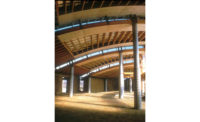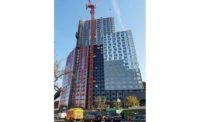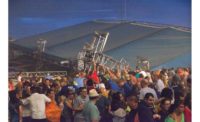
While a penniless college student in Texas, Hong Kong native Dennis C.K. Poon’s first gig in the U.S. paid $2 an hour. At that rate, he knew he would never stay in school. Thus, he started buying cars from graduating seniors, fixing them up and selling them to other students. He still needed money. So during summers, he worked three shifts a day in a restaurant in New York City’s Chinatown.
Poon finished his degree in civil engineering after only six semesters and moved to New York City to get a master’s degree from Columbia University. He kept waiting tables. One day, a customer asked why Poon was not working as an engineer. Firms were reluctant to hire him because he did not have permanent resident status, he answered. The customer told this to Charles Thornton, an executive at a structural firm that would become Thornton Tomasetti. Thornton hired Poon in 1977.
Since then, Poon, now a U.S. citizen, has designed structures far and wide, but he’s still with TT. A managing principal, the engineer built his career in supertower design with the same spirit that served him well as a student.
In China, Poon has argued persuasively, since 1996, for design criteria that lead to more-efficient structures in an effort to align a conservative code with international standards. “Dennis has been at the forefront of trying to promote better structural engineering in China,” says David Malott, a director of New York City-based architect KPF. “When he approaches structural reviewers, who tend to be quite conservative, he will challenge them in a respectful way,” adds Malott, who is working with Poon on the 660-meter-tall Ping An International Financial Center, just getting under way in Shenzhen.
Astonishingly, China has more than 25 supertowers planned or under way. The design for another TT project, the 632-m-high Shanghai Tower, which is ahead of Ping An IFC, was a guinea pig for crafting China’s first supertall building code, expected out in a year or so. “The building already incorporates some of the spirit of the code,” which will require performance-based design (PBD), says Poon.
Shanghai Tower is on deck to become the world’s tallest composite structure, China’s tallest building and the world’s second-tallest, after the 828-m Burj Khalifa in Dubai. The 632-m tower is set to replace the world’s second-tallest tower, the 508-m Taipei 101, also a Poon team design. (When finished, Ping An IFC will usurp Shanghai Tower’s ranking.)
Poon says there is still much to be done to improve supertower design, including studying whether performance inherent in building codes is appropriate for supertowers.
“Successful PBD requires demonstrating that acceptance criteria have been met,” says Poon. “But appropriate acceptance criteria for supertall buildings deserves further discussion with owners, government officials and insurance companies as well as architects, engineers and constructors.”





Post a comment to this article
Report Abusive Comment